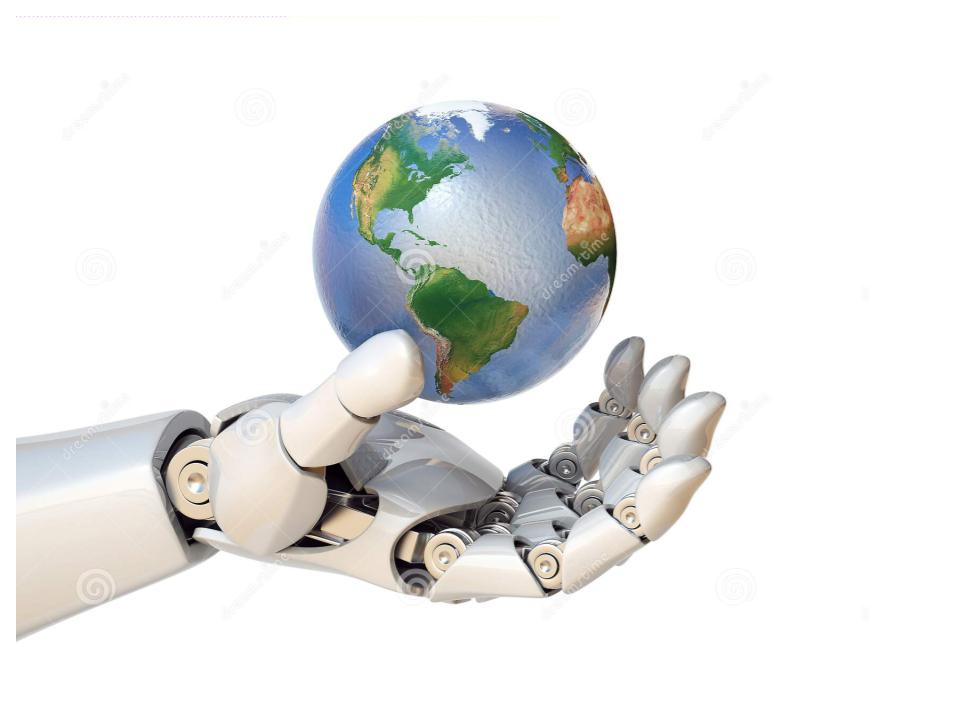Written by Redouan Lamkaraf

Artificial Intelligence, the technology with outweighing benefits for different entities from public and private sectors up to national scale of countries, up to growth of economic activity globally. But against what costs?
AI will have a huge contribution to economic activity. Therefore, the willingness of countries to take certain action for introducing AI as a beneficial purpose for its economic activity, has become more apparent in the last decade. Some countries have already shown the effect of adopting some sectors with areas in AI. The discovered and found results created more international movement towards adopting AI into society and economy, particularly on AI areas benefiting the economy and security. One of those steps taken by governments from different countries such as Canada, China and South-Korea is the implementation of AI education programs and extending university facilities with AI labs. The main purpose of these investments by governments are in an effort to create a vast and consistent stream pipeline of next generation AI talents to ensure further development at a fast pace and secure its future economy.
The great and severe implications for not involving in the adoption of AI, is the possible appearance of an non-proportional division in economic strength towards countries and companies with most solid knowledge and know-how on AI. Leading a shift in power and democracy in their favor, unbalancing the equal share in global markets for companies and countries and losing democratic policies to an uncontrollable state.
How the existence of a legal embodiment’s regulation can impact the deployment and development of AI in the right direction and create a healthy environment for human welfare and well-being in a global economy steered under influence of AI is to be explained further on.
A look into the effect of AI on world economic activity from a consultants prediction model perspective
Looking at different areas that AI offers, there are several areas that can be categorized as tools that will be absorbed or adopted by companies for their business functionality and production. Computer vision, virtual assistance, natural language, advanced machine learning and robot process automation. The degree of variance in the adoption and absorption of these tools will be likely different for each company. Some companies might use a single AI tool in an opportunistic approach to optimize a functionality, while other companies will absorb the whole set of AI tools into their business model. In between these extremities of poles will lay stages of adoption level by companies.
Models designed, by consultants, to predict the percentage of companies adopting at least one AI technology against companies absorbing all AI categories in their business operation in a certain time range, show that 70 % of companies will have at least one AI technology adopted and less than half will have fully absorbed all the AI categories by 2030.
Occurrence of disruption in economic balance could be the case when companies fall behind, as a consequence of late participation in the development of AI. Companies with a late adoption to the technology will suffer from incapability to develop at identical speed as other well developed companies, who started in the early stage of AI development. Also the use of talents will become more rare, making it harder for late runners to acquire potential AI talents, top engineers and AI researchers at the forefront of AI latest development.

The image above illustrates a prediction model set up by McKinsey company. The simulation shows the early absorption of AI by companies, called here front-runners, and companies with late absorption in AI. Most important trend that the graph and diagrams emphasize is the huge gain of companies that started in the early development phase of AI, adopting AI gives them a positive rate result in gain against loss, while late absorbents face a negative rate result during the period between 2020 to 2030. It backs up the explanation for difficulty in entering the market
Nevertheless, simulation of models designed to predict the average growth in economic activity reveals a 16% increase of cumulative GDP compared with today’s GDP with a value of 13 trillion dollars by 2030. When true, the impact of AI with other general-purpose technologies will be comparable. Indicating that AI’s impact will be rather measured on a long-term basis and mapped on a large range of activities, since such astronomical monetary values are seen as typical results of global behavior. https://www.mckinsey.com/featured-insights/artificial-intelligence/notes-from-the-ai-frontier-modeling-the-impact-of-ai-on-the-world-economy
Why it is important for not letting AI “spin free” without being controlled and directed under regulations
Under the perspective of labor
Its effects can easily be seen and well understood, AI automation in the fieldwork will augment or in worst case delete a particular part of human labored jobs.
An uncertainty that may appear for some typical work groups. These groups are to be seen as the most vulnerable workers, when AI sets the stage on the job market. It mostly has to do with the simplicity of writing the code to perform these kind of works, that will be hit the most. They are jobs that are repetitive and routine based and fall under the category of vulnerable jobs, as to be quickly taken over by automation.
A shift in availability of jobs will be a typical preference move towards digital jobs. The request for talents in the digital fields will cause a skewed distribution of available jobs, where repetitive jobs are highly presumed to be deleted. This shift will create the existence of unequal division of wages and investments will increase into advanced development with more requests for AI and other digital specialism.
A phenomenon that is already set in trend is the lack of advancement in households; not being able to keep up with the innovations that occur. The income group in which households of less advancement are enlisted in, is increasing without an interruption of reducing the trend curve and has been followed for more than a decade. With income and wealth in unequal proportion gained to top earners, less advanced households are less convinced of a global and free trade economy and immigration.
A regulation may take these uncertainties away, by taking responsibility for how to deal with the distribution of new and advanced technologies such as AI that have a big impact on societies, setting up policies, paving infrastructures for AI and releasing subsidies for companies. For instance, subsidies will motivate companies to hire less educated or experienced workers in the digital fieldwork and educate them directly on the fieldwork. Educating internally reduces the complexity of understanding technology, as visual attendance carries less weight to comprehend the technology. It also increase the range of age in recruitment and reduces the exclusion of intellectual impaired humans.
Another policy of regulation is that a legal embodiment can describe, in its policy, how a procedure is to be followed, prerequisites, in advance for implementing AI and entering the market and society. A protection that can provide a fair share of usage by everyone, for everyone and not only the ones capable of understanding and able to pay for it.
Under the perspective of companies
The act of first AI adopting companies to their service and products, so-called front runners, will likely profit the most for its non explored capabilities and possibilities. An acceleration in the performance of productivity and quality will be observed, leaving other non AI adopted companies far behind. This creates a gap that will only increase as AI usage increase, on long term prospects, and will increase the cash-flow and reduce the costs. As for the others, costs and revenues will remain the same as today. According to models, by 2030, a double cash-flow is predicted for companies entering in the early stage against a 20% decline for companies that did not adopt AI in their business operation.
Front runners tend to have a strong IT base, higher propensity to invest in AI and positive view in business cases for AI, while non-adopters tend to lack in skills and therefore less incentive to invest. Furthermore, the competition will grow, non-proportionally, to such an extent that the late adopters will have difficulty entering AI related markets. Further expectations to perceive in the near future is the protective attitude of front-runners on the market, possible of putting up barriers to impede competitive pressure.
This can be dealt with under the use of regulations, for example: watchdog transparent market in AI, fee on tech monopoly, control vulnerability and dependency of markets by the type of AI that is used, policies on integration levels of AI driven algorithms. All of these examples can be written under international treaties, realized by an international legal embodiment. The need for international legal embodiment to write such policies is of essence but also complex. Since consensus is difficult to reach between countries. Especially, if one country comes up with those policies the other might be ignorant of it. With an international legal embodiment those policies can be made in less difficulty, out of neutral position a consensus is more easy to be reached.
Under the perspective of countries
The nation’s economy is aware of AI’s impact and what advantages it can bring to its economy. While some countries exceed others in scientific research, others are highly represented by tech companies producing cutting-edge technologies based on AI. Either way both produce the data that informs about AI’s implication on the economy and countries; to be sufficiently innervated in start making maneuvers.
To take a particular country under scope in effort to emphasize behavior of countries in favor of implementing AI and reasons for its belief of how potential AI can be for their economy, an observance on China’s thought for integrating AI and transforming its economy with AI is a “perfect match” for reflecting the reasons of particular behaviors towards using AI. China is an “ideal” example for the adoption of AI in its economy. To start, China has a vast population and a diverse industry mix, this creates huge volumes of data. And since AI’s performance runs on data fuel, a faster development may occur to China and used as an advantage for obtaining a leadership role in AI, globally. It holds the largest number of big tech establishments in the world and not to mention that these big tech companies are making huge R&D investments in AI. Another important fact for adopting AI nationwide is the decline of the work-age population. To sustain future economic growth with an annual GDP growth, automating workplaces is of the essence to reach this goal and to keep productivity increasing.
https://www.mckinsey.com/featured-insights/china/artificial-intelligence-implications-for-china
It may portray as if AI was made for China when looking at the unique advantages that it holds. Be that as it may, in same time uncertain question also arise above the horizon. The country’s economy is intertwined with integrated markets around the world, and therefore it’s economy relies mostly on global hunger for China’s products. An erosion of support in globalization and an inward turning of advanced countries could let China fail in drawing everyone online. Reducing their ability to create massive data and fast AI development, which would not make it any more realistic to be able to keep up the growth of GDP in the perceivable future. The chance of discouraging countries is apparent, an international embodiment could provide a compromise in the trade of massive data, and therefore the speed of AI’s development in each country. Seeing the advantages of AI sticking out for China above others, an international legal embodiment is crucial for a fair trade and co-existence.
Creation of a healthy environment under usage of AI is a global task and can only be reached with a policy framework. And these policy frameworks are to be taken under responsibility by an international legal embodiment to make the necessary placement of such policy frameworks appropriately to have a global existence of human well-being and welfare.
How an international legal embodiment could construct and conduct development in an AI global economy
First of all is that AI needs to be seen as a public domain in the eyes of the people and not to be seen solely as a product or invention entitled to companies only, seen as a public property. AI is a technology provided to all life and nations and applicable without boundaries to all humans, otherwise not to be publicly distributed.
According to its description, it means that AI will have to fall under the supervision of a governmental judicial body. Since it has the potential for global impacts, also an international legal embodiment is needed, an international committee, able to provide countries, companies and individuals who lack knowledge and are falling behind AI adoption, the essential elements to build up their AI features too. Harmonizing development of AI worldwide as the main aim. Essential elements – elaborating on the elements, the elements need to be defined as building blocks, a necessity to set up healthy environment for the use of AI. Undertaking the actions for setting up these building blocks, measurements and feedback’s need to be called in the loop of AI proliferation. A loop contained by an international legal embodiment that reflects on the data received for the actions undertaking by countries and acts upon it for improvement if needed. When, for example, falling behind the global development on AI. A possible trigger could be a threshold – a baseline of minimum achievement based on calibration of global progress in AI – in the loop.
A challenge for an international legal embodiment in case of realizing a developing loop is to bring collaboration up to life. One of its reasonable movement could be to reward countries, companies and engineers for their provided data on the level of development in AI. Other approaches could be to give more leading roles towards those cooperating and preserving governing plans and policies made by the international legal embodiment and ease their work by subsidies. Collaboration could hold the following data and activities: technological information, expertise, migration of high skilled AI engineers and developers, AI influence on GDP growth, difference in salaries between digital and non-digital groups, annual report of AI based patents filed, degree of AI coverage on national scale, subsidies for AI collaboration platforms, degree of AI infrastructure on national scale, funds for AI code transparency, national transformation degree, shift rates, digital vacancy and so on.
Strict policy plans are also to be taken in account for being constructed and conducted by an international AI committee. The measures under these strict policies will translate how to prevent a counter progress towards an unbalanced global economy with AI. Measures that make it less sensitive to big tech companies to abuse their position by creating barriers impeding competitions, countries blocking exchange of technological information and hostile takeover by big tech companies of small developing AI companies. Also strict in receiving patents on AI algorithms and applications to protect AI as a public value.
A consensus of all parties participating in this effort will be needed to reach the goal of projecting AI as a public protected value.


